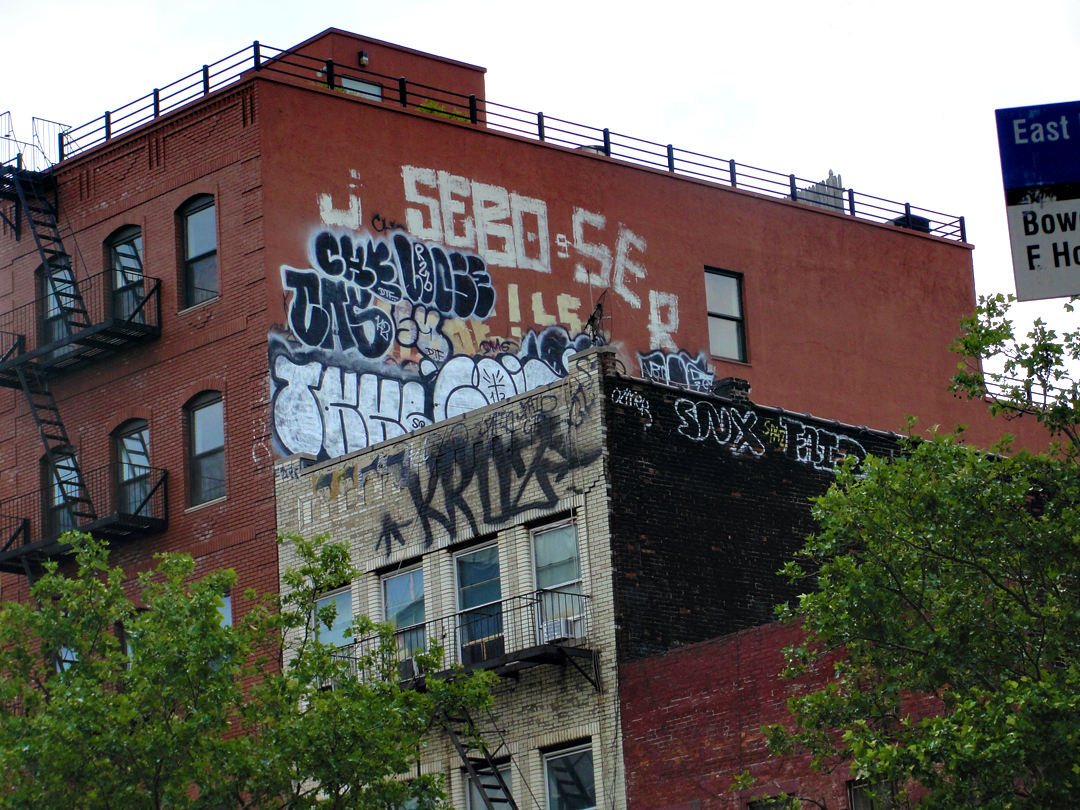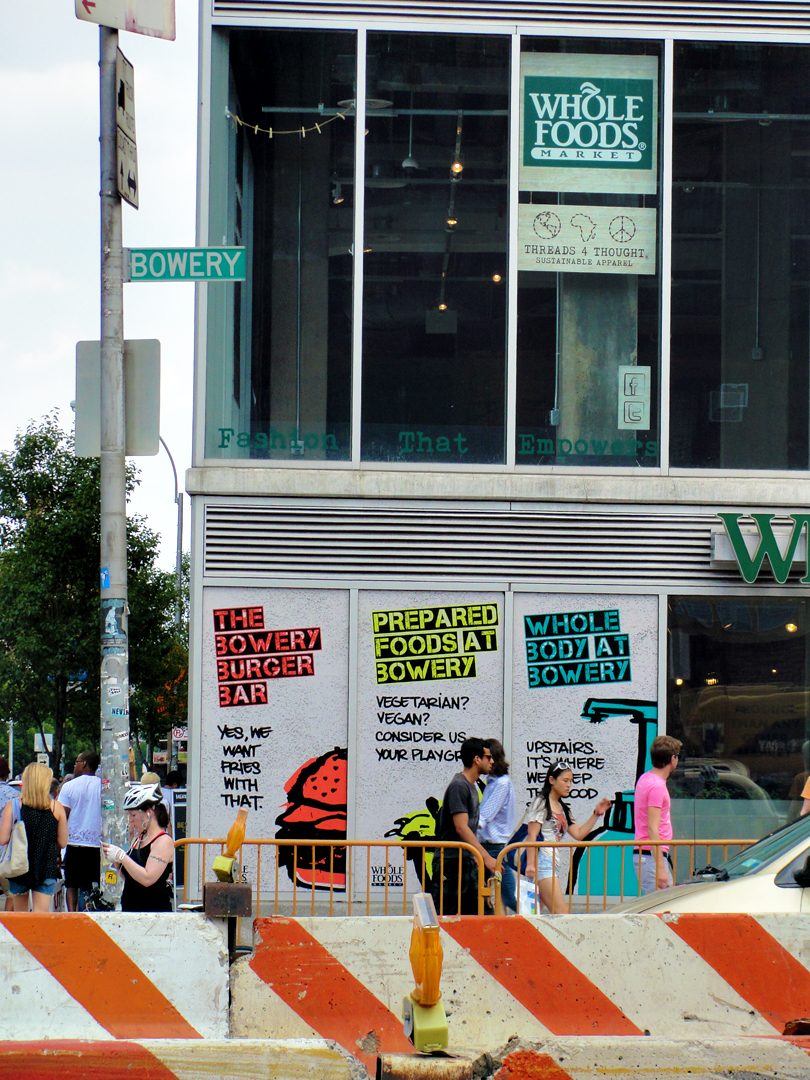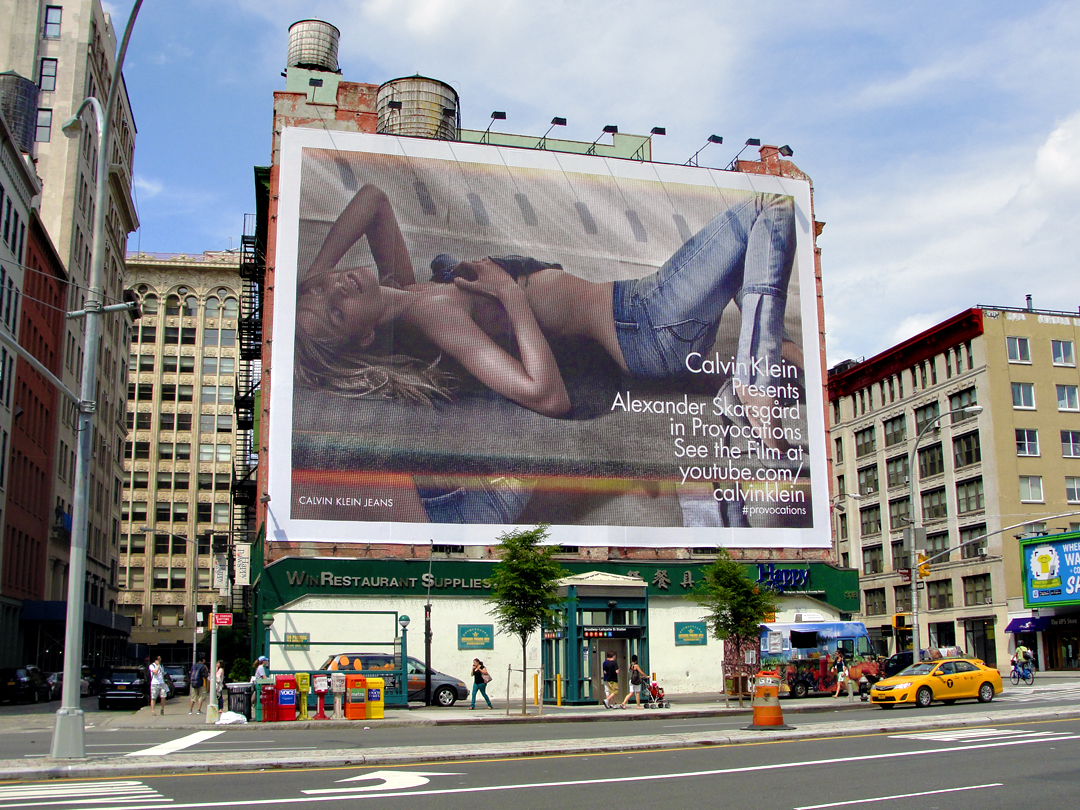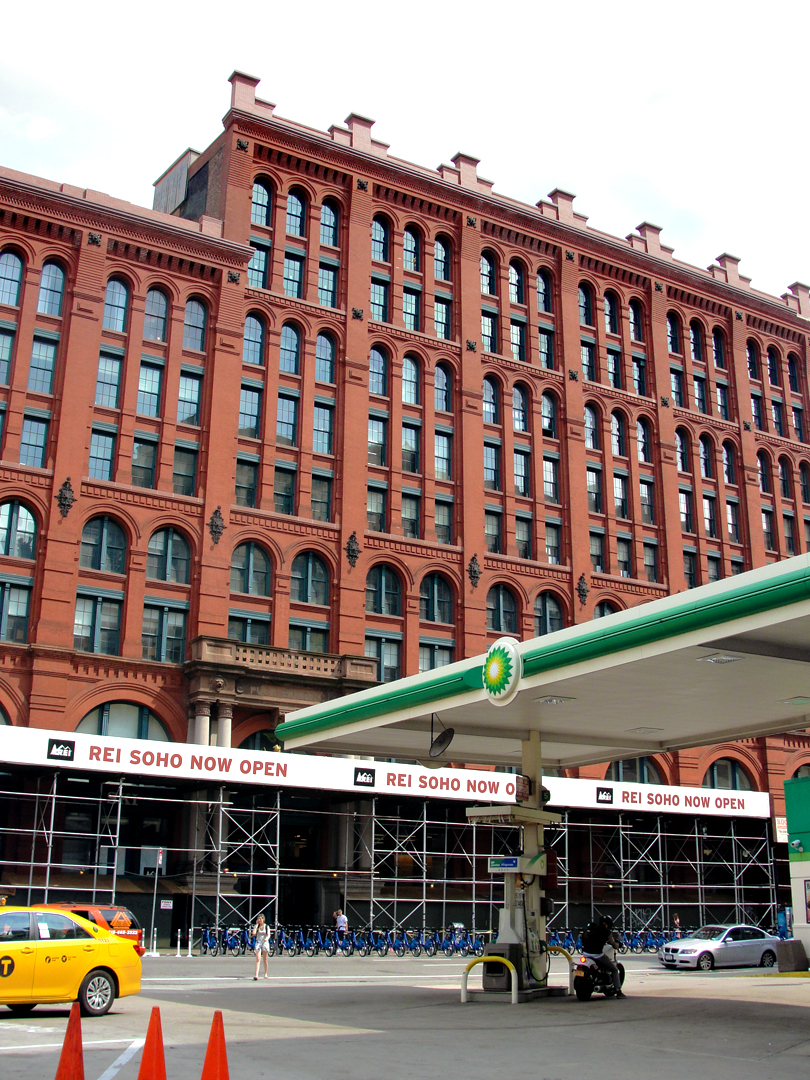
All cities have areas or neighborhoods that get on the list of "places you don't want to go," at least if you have the choice. There was a time when "the Bowery" was a location-of-last-resort in Manhattan, with Single Room Occupancy Hotels (SROs), cheap booze and any other intoxicant you might want to ease your decline. It would not have been uncommon to see buildings decorated like the ones above. The neighborhood around the Bowery figures in Theodore Dreiser's Sister Carrie (1900) as the final refuge of G.W. Hurstwood during his decline from fairly respectable to rock-bottom destitute, and, eventually, suicide.
I was down on East Houston in early June of 2013, and taking a few photographs as I hadn't been along that street in some time. I had read that the neighborhood was experiencing something of a renaissance, or maybe it was gentrification, but I was still surprised to turn around and realize that the intersection of Bowery and E. Houston was dominated by a grocery:

A little further along, I took these:



I mean, I'm all for a vibrant area with mixed use buildings and a diverse population, but -- I find myself looking around at this and thinking "WHAT the HELL?"
On further reflection, I wonder if the graffiti in the first photo were kept up there as a weird kind of historical preservation.
About Manhattan Page Four